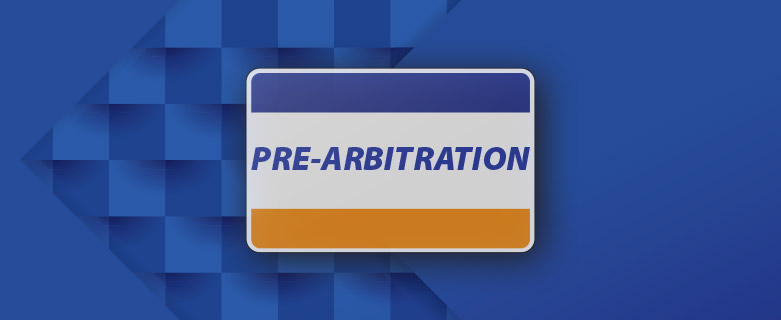News

3 Ways to Simplify Your Chargeback Accounting
As anyone who's had the pleasure of handling chargeback accounting will know, it's no easy task. Chargeback accounting is complicated, expensive, time-consuming, and tends to favor the customer over the merchant.
Yet no business can opt out—chargebacks fall under the US government's Truth in Lending Act. Also known as Regulation Z, the program protects consumers from fraud and merchant errors by letting them file disputes on unauthorized or unfair transactions (including poor-quality goods and items delivered late).
When cardholders file a chargeback, they contact their issuing bank and begin the process of reversing the transaction. If the banks involved approve the dispute, the customer will receive a refund, while the merchant is hit with charges that go way beyond the good or service's initial price.
This can be catastrophic for retailers' finances, and it also results in accounting complications—especially if they decide to challenge a dispute, which must also be appropriately recorded. Failure to account for chargebacks accurately could result in penalties from card networks for surpassing the maximum chargeback threshold (a measure put in place to flag merchants with questionable practices).
Fortunately, there are ways to identify and track chargebacks, helping merchants regain control and avoid penalties. This requires a merchant's accounting team to have a solid knowledge of chargeback accounting and an understanding of how the different entities involved in the chargeback process interact. Also, since methods differ somewhat between processors, banks, and card networks, they must stay updated with each party's specific requirements.
Why Chargeback Accounting is Challenging
Accounting doesn't exactly have a reputation for being easy, and adding chargebacks into the equation adds an extra curveball. This can leave anyone who isn't a qualified accountant feeling alienated and mystified—it's tempting to "leave it to the professionals" and hope for the best.
However, no matter how capable an accounting team is, understanding the basic principles behind chargeback accounting is vital for developing insight into one of the most crucial processes in every business.
Chargebacks are Irregular
Deposits and checks are fairly predictable—most businesses have a rough idea of how many they should expect each week. Yet when it comes to chargebacks, it's common to receive a flood of disputes one week followed by no chargebacks for weeks on end.
Although receiving a low number of chargebacks should come as a relief, it can cause accounting problems. Staff may forget how to record disputes accurately, which can lead to problems later on.
The Chargebacks Dispute Process Takes Time
It usually takes weeks—or even months—to resolve a chargeback after filing a dispute. Unfortunately, merchants must wait until the banks approve their dispute before receiving their money back, which adds an extra complication to chargeback accounting.
With so many payable amounts pending that may not ever be returned, all with their own separate timeframes, chargeback accounting requires a keen eye for detail and a long memory.
Sometimes, a chargeback case can span two different fiscal years, which is something to be aware of when filing taxes.
There are Multiple Expenses to Track
Every time a customer files a chargeback, it's an extra fee to account for. Even if the merchant believes the dispute is illegitimate and will eventually be canceled, it's still necessary to document it.
Then there are the many other expenses involved with chargebacks, such as legal fees, dispute resolution, and lost money from shipping.
Adding to the Complexity
As if chargeback accounting didn't sound complicated enough already, there's another aspect to consider. The process involves seemingly countless variables, and the worst part is that every processor, bank, and piece of accounting software has a slightly different way of recording them.
Even the correct way to document a chargeback differs. Although banks will eventually accept or reverse every chargeback, there are many stages and intermediaries along the way, leading to variations in how to enter the record.
Another element to consider is the accounting methodology used—some firms are Accrual Basis, while others are Cash Basis. To examine how these two methods differ, let's use the example of a merchant that receives a chargeback and decides not to dispute it (meaning the transaction value will be lost).
An accounting team that follows a Cash Basis would have two choices: To isolate the chargeback reversals, or to include them alongside other refunds and record them as a "Debt to Income" for the year they were taken from the account.
For firms that carry out Accrual Basis accounting, including chargeback reversals alongside refunds wouldn't be an option (it would render the records inaccurate). Instead, they would have to document them as a "Bad Debt" expense.
What about when a merchant disputes a chargeback and wins the representment? For Cash Basis accounting, the funds would come under the "Accounts Receivable" income. Meanwhile, for Accrual Basis Accounting, the initial transaction value would first come under "Accounts Receivable" income (in a section set up specifically for the chargeback), and then be written off under "Bad Debt Expense."
This is getting complex already, but it's just the beginning.
How Merchant Accounts are Impacted
For chargeback accounting reports to be accurate, the input must be accurate. That goes without saying. Yet different banks display chargeback information in different ways, which adds yet another dimension to the difficulty of chargeback accounting.
Global and national banks (e.g., Citibank and Bank of America) usually separate chargebacks from other transactions on monthly statements, making them simple for merchants to identify and include in their accounting process.
Third-party payment providers (e.g., Due or Square) tend to be less consistent—even the more reputable names. These solutions are popular among small or high-risk merchants, which are also the most likely to make mistakes in their accounting process. It's therefore easy for chargebacks to slip through the net.
One issue is that third parties are liable to lump chargebacks and expenses together as a single transaction on a statement. It then becomes the responsibility of the merchant's accounting team to contact the provider and figure out how much of the total transaction the chargeback makes up. Another common problem is that reversals, fees, and transaction amounts can appear separately on the statement, making it hard for merchants to piece them together.
Also, when merchants try to trace the origin of the expenses on their statement, they sometimes realize that their payment provider charged them a fee and set it aside in a reserve fund. This can take months to get back, which can be incredibly frustrating.
Finally, merchants must also deal with chargeback fees correctly.
Many people assume that chargeback fees only apply for approved disputes, but sadly, this is irrelevant. Once a cardholder files a chargeback, the fee is a given. It's best to record them as an operating expense, under the same category as bank fees.
However, merchants that deal with a high number of chargebacks might prefer to create a dedicated sub-account. They can use this account for all fees and costs related to chargebacks, including disputes. It's a good idea to monitor these carefully to ensure that representments are achieving a good return on investment.
How to Simplify Your Chargeback Accounting
Given the level of complexity involved in chargeback accounting, it's not hard to see that things can go seriously wrong unless firms take steps to ensure accuracy and efficiency.
Merchants need to analyze transaction data, identify operational or product-related causes of chargebacks, and fix any issues they identify along the way. They must also keep themselves protected against true fraud and dispute any illegitimate chargebacks customers file.
When carried out manually, errors are very possible. For full accuracy, a chargeback management solution is essential—this won't just improve the accounting process, but also save time. Key tools included in this software solution are management dashboards, analytics, and real-time reporting.
Management Dashboards
To fight chargebacks and keep the chargeback rate low, it's essential to respond to disputes as quickly as possible. Yet this is no easy task when merchants have multiple accounts and need to log into different portals before they can even access the data they need.
A management dashboard makes this process easy, using APIs from the merchant's gateway, payment solution, and more to pull relevant chargeback data and information. This allows merchants to monitor and track their active chargeback cases, the real-time chargeback rate, and chargeback alerts across various accounts—all in one place.
Chargeback management solutions also make it easy for merchants to import chargeback or transaction data that they can use to file evidence for a charge or answer queries.
Analytics Tools
The least a merchant can do to stay on top of their disputes is track their chargeback rates. Surpassing a card network's threshold spells disaster, so merchants must take action to figure out the most common reasons for disputes (often errors or vulnerabilities). That way, they can prevent the same things from happening again.
Although analyzing chargeback data is a complex and time-consuming task, analytics tools make it as simple as possible. The software can sort the data to find relevant information, create reports for the accounting team to analyze, and break everything down into an intuitive picture of what's happening.
Real-Time Reporting
Although analyzing historical chargeback data is important, it's also crucial to stay on top of developments as they're unfolding. To do this, merchants must go beyond their end-of-month summaries and access real-time reporting.
This is almost impossible to achieve manually—someone would have to log into each portal, collect the information, and put it onto a spreadsheet or central system on a daily basis. Few businesses have time for this.
A welcome alternative is using a chargeback management software solution with a reliable real-time reporting feature, which automates this process to give merchants the answers they need. With a few clicks of a button, teams can convert raw data into an accessible, informative report that everyone in the company can understand and analyze, even if they don't have an accounting background.
The Right Chargeback Accounting Solution
The right chargeback management solution won't just provide you with the tools you need (like those highlighted above), they'll also provide the information and insights that tell you how to put those tools to best use. Most importantly, it should never leave you in the dark when it comes to knowing what your chargeback rate is and how your solutions are measuring up.
MidMetrics provides all of these key functions for chargeback management with a full suite of proprietary chargeback management tools that include Management Dashboards, In-Depth Analytics Tools, and On-Demand Reports. This gives you a single powerful platform from which to better manage your chargebacks, protect merchant accounts, and simplify your chargeback accounting—all for one price.
You could try to put together all of these attributes from a bunch of different providers, but how much would it all cost—and would it really be as effective? MidMetrics is expertly designed to be easy to use and integrate with your existing systems, but also sophisticated enough to generate actionable insights for merchants in some of the toughest and most complex chargeback situations.
Want to see MidMetrics in action? Book a demo with one of our chargeback specialists today.
Given the level of complexity involved in chargeback accounting, it's not hard to see that things can go seriously wrong unless firms take steps to ensure accuracy and efficiency. Check out our guide, How to Reduce Complexity in Your Chargeback Accounting, for additional ways to simplify and improve your process.










